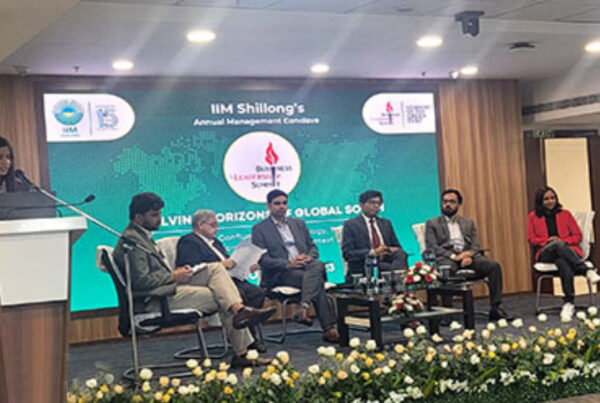It all started back in October 1969, when the Tarapur Atomic Power Station came online, as part of the country’s plan to build nuclear power plants. Built under the agreement between India, the US, and the International Atomic Energy Agency, the Tarapurpower station was jointly constructed by General Electric and Bechtel Corporation. It came under the purview of the Department of Atomic Energy, Government of India. The power plant, with an initial operating capacity of 160MW, formed the building block of India’s ambitious plans in nuclear power generation.
Cut to 2022, India is planning to build 6GW of nuclear capacity, second only to China. Fueling the drivers India’s target to meet net zero emissions by 2070. As reiterated by the former Chairman of the Atomic Energy Commission, Dr. Anil Kakodkar, India would find it difficult to achieve carbon neutrality without focusing its efforts on developing nuclear capacity. The Nuclear Power Corporation of India Limited (NPCIL) currently has a capacity of 6,780 MW. In FY-21, India’s nuclear output was43 TWh, accounting for just 3% of the overall energy output. The country’s reliance on the traditional methods of power generation via coal and other fossil fuels poses a major challenge to meeting its emission targets. Shifting from fossil fuels to other sources of power generation, including nuclear energy sources, is a massive undertaking—as of June 2022, fossil fuel-based power generation accounted for 59% of the total installed capacity, while nuclear power generation accounted for a mere 1.7%.
Nuclear power plants, although expensive to construct, area major boost to the country’s energy infrastructure. Nuclear energy sources generate more power compared to other fossil fuels. The underlying principle on which a nuclear reactor works is nuclear fission, an exothermic process that produces a massive amount of energy. Due to their high energy-producing capacity, nuclear power plants are powerful energy generators. These plants have the lowest carbon footprint compared to other power generation sources, and lower operating expenses, including the cost of toxic waste disposal. Moreover, given the predictability of energy generation, a nuclear power plant is highly dependable.
The pitfall of nuclear power generation is that most plants rely on the supply of uranium and thorium, which are a limited resource available in the Earth’s crust. This technically makes nuclear power generation a non-renewable source of energy. Although the use of breeder reactors (these generate more fissile materials than they consume) is a part solution to this problem, the global community is still divided on the description of nuclear energy as a renewable source. At present, India has only one fast breeder reactor that is in the advanced stage of commissioning, expected to be operational in October 2022, at the Kalpakkam power plant near Chennai.
India imports uranium to meet its requirements. Although uranium reserves are found across the country, the Jaduguda mines in Jharkhand account for the bulk of the metal mined domestically. These mines have become old; plus, the ore is located deep inside, making mining even more expensive. As a result, India relies on cheaper uranium imports. A parliamentary panel report, submitted in 2018, suggested that India should actively concentrate its efforts on other uranium reserves and start mining them to reduce its dependence on imports.
Since 2009, the country has taken steps to develop its nuclear capabilities, as part of its three-stage nuclear power program. Under the second stage of the nuclear power program, India planned to build and operate fast breeder reactors using plutonium-239 as fuel which would be recovered by reprocessing the fuel spent in the first stage of the program. Although the first reactor’s commissioning has been delayed for a decade, the objective was to use these reactors and take the country’splutonium-239 fuel capacity to a level where it could be leveraged to set up more reactors until the third-stage self-sustaining thorium-and uranium-based plants became operational.
India has set an ambitious nuclear capacity-building target, eyeing 22,480 MW by 2031. As of 2021, 5 projects were under construction with a total capacity of 6,000 MW. Another 10 with a combined capacity of 33,000 MW are being planned. On-time delivery of under-construction projects, expansion of the country’s uranium and thorium capacities,and smooth implementation of planned projects will play a key role in deciding whether India can achieve its net emission targets and attain carbon neutrality by 2070.
Having said that, renewable sources of energy such as wind and solar have also come to the fore, accounting for 40% of India’s energy generation capacity. Amid the advancements in renewable technology globally, the per unit cost of energy produced from renewable sources has gone down significantly, challenging the potential of nuclear power. Nuclear power plants in India have also faced disruptions due to protests, poor availability of fuel, cost and time overruns, technological problems, and security concerns, especially after the Fukushima incident in Japan.
Given the growing consciousness in people about renewable sources of energy, and active private industry participation, it will be worth seeing how both the energy options fight it out in the coming years. Either way, it will be a win-win scenario for a growing global economy. The Government of India is promoting manufacturing in India under the slogan Atmanirbhar Bharat (Self-reliant India). An Atom-Nirbhar Bharat too may be in the offing.
For more insights on business and consumer research, connect with DiveshKhemani, Director, Avalon Global Research, or VedantKhandelwal, Analyst.




